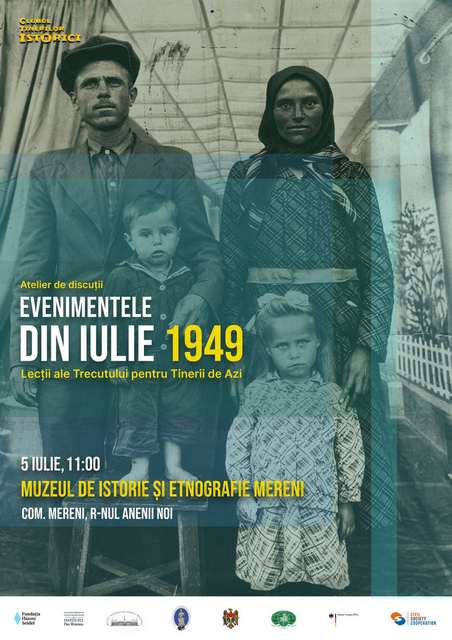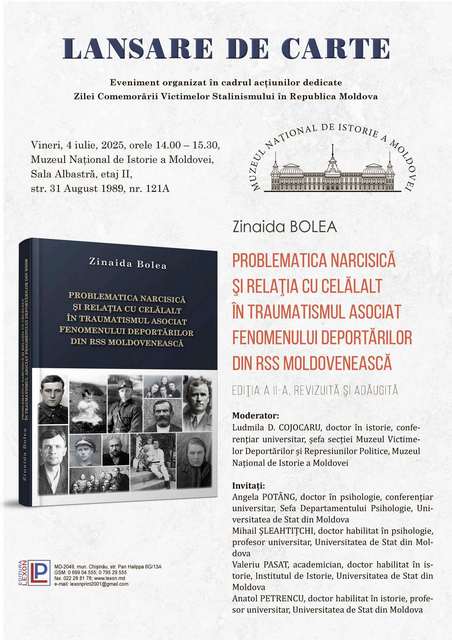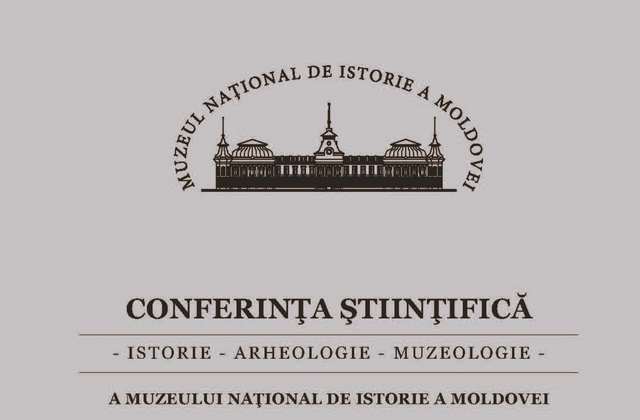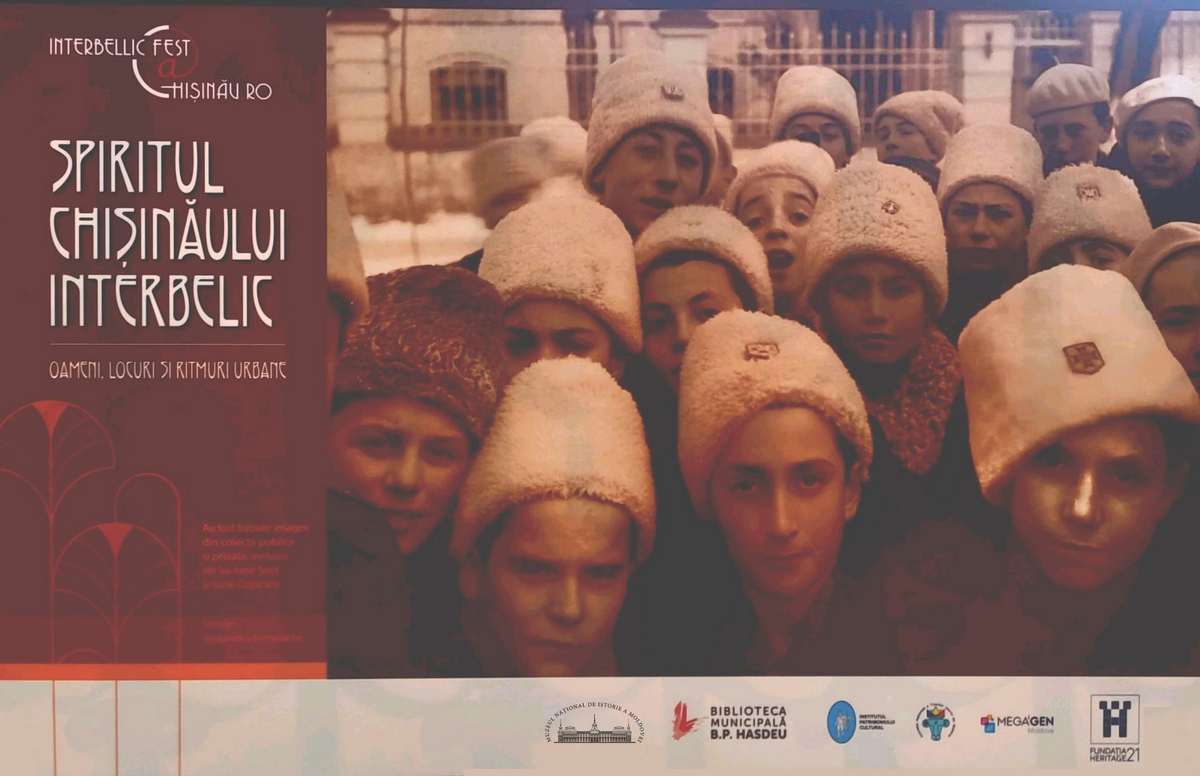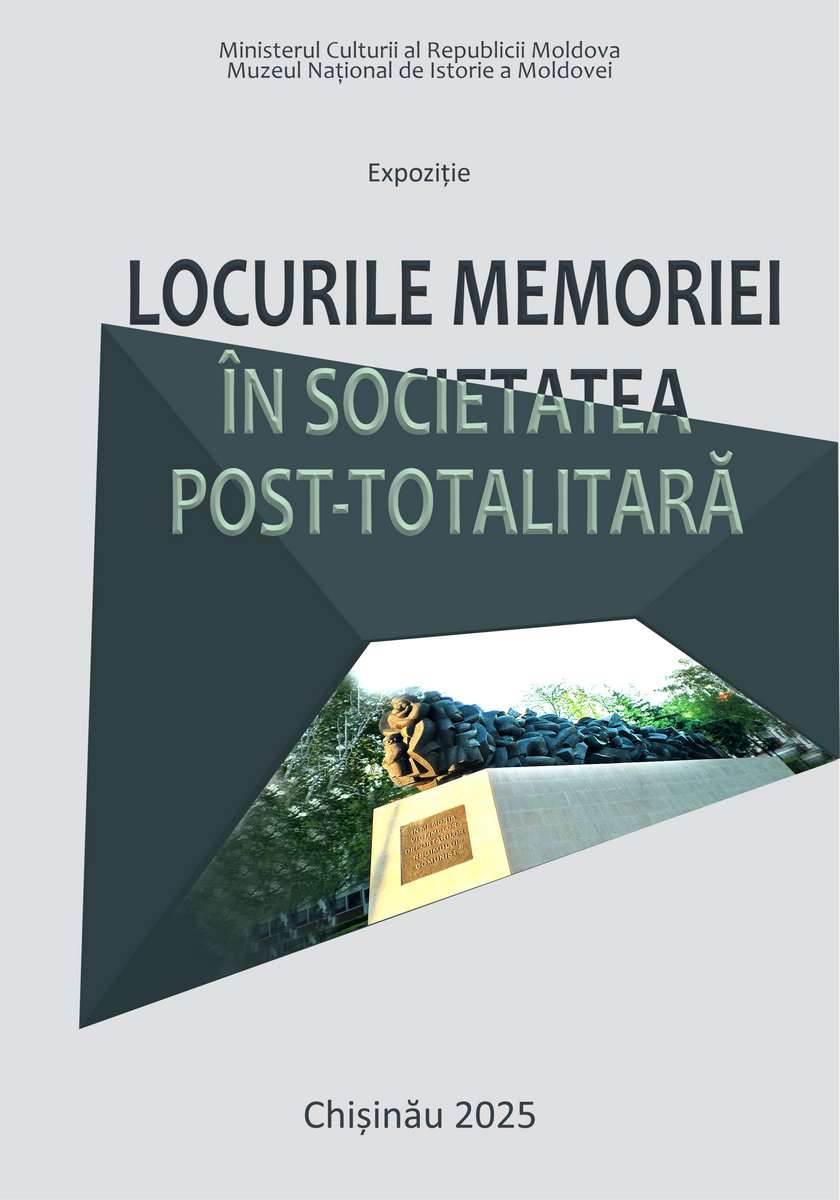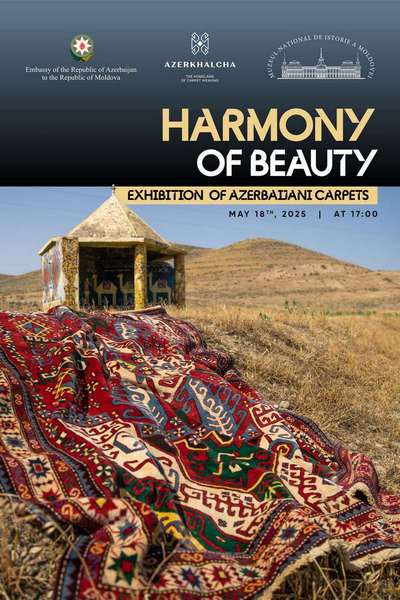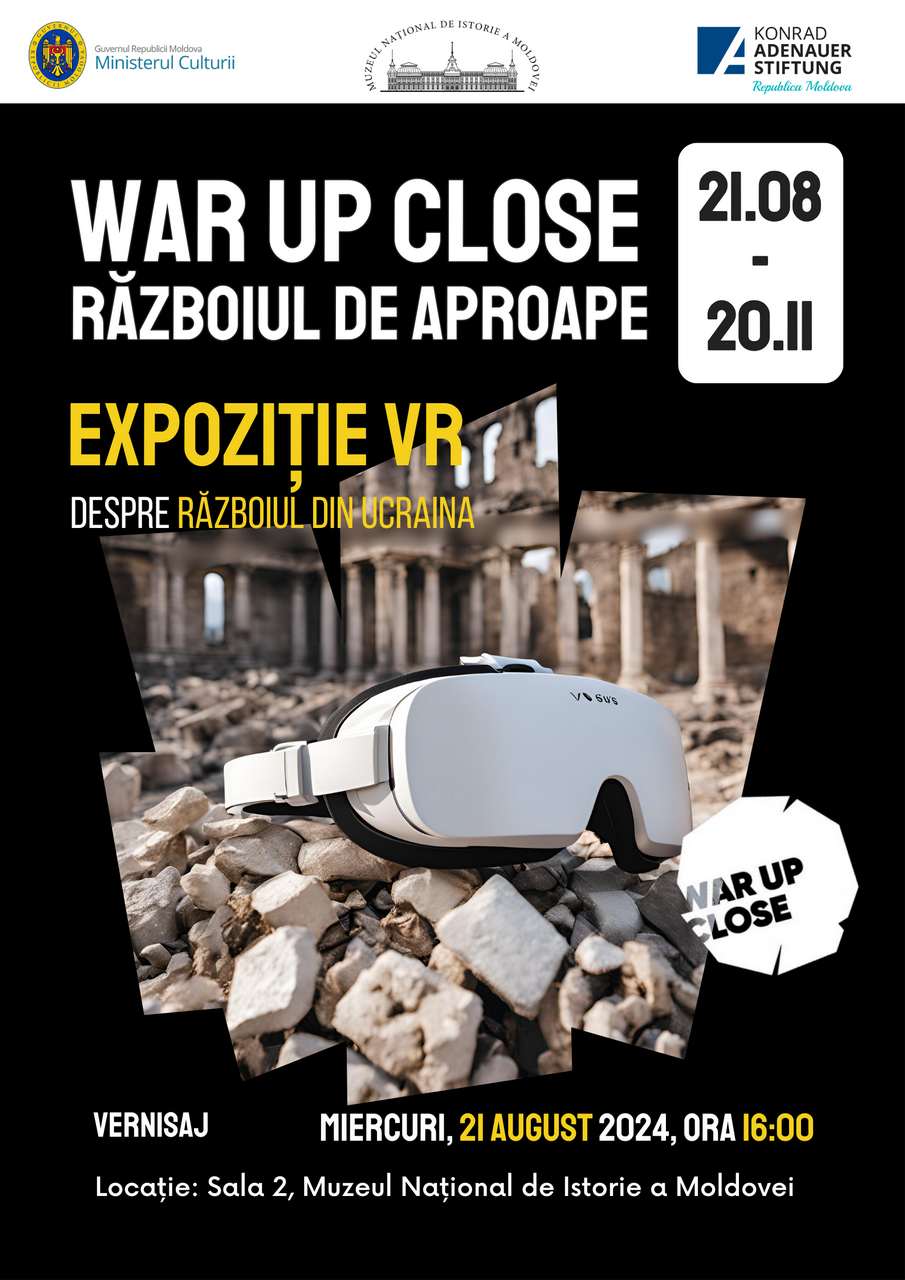 The National Museum of History of Moldova is pleased to announce the opening of the virtual reality exhibition "War Up Close" on August 21, 2024, at 4:00 PM. This exhibition is organized in partnership with the Konrad Adenauer Foundation's Moldova Office.
The National Museum of History of Moldova is pleased to announce the opening of the virtual reality exhibition "War Up Close" on August 21, 2024, at 4:00 PM. This exhibition is organized in partnership with the Konrad Adenauer Foundation's Moldova Office.
"War Up Close" is a virtual reality exhibition aimed at showcasing the scale of the disaster caused by Russia's unjustified war on Ukraine. Through 360-degree panoramic photographs, drone images, and 3D modeling, the exhibition makes the nature of this war tangible, highlighting the destruction of civilian infrastructure and the suffering of millions of Ukrainians.
The exhibition immerses visitors in pre- and post-war images, offering a raw, unfiltered view of the human cost of Russia's aggression in Ukraine. It also provides visitors with the opportunity to "walk through" and virtually explore areas, viewing 360-degree images from fixed locations via viewing devices.
The project was initiated by experts from Ukraine's Discover.ua and FreegenGroup, who, despite the dangers, mapped the crimes against Ukraine for future generations to preserve the memory of this tragedy using experienced photojournalists and state-of-the-art technology.
Mykola Omelchenko, Ukraine's first Google Trusted Photographer, began photographing for "War Up Close" during a period when the Russian government denied responsibility for military strikes on non-military targets, such as residential areas and cultural centers, claiming instead that the Ukrainian government was falsifying or altering images of the destruction. Omelchenko wanted people to explore the images themselves, so they are presented without captions or commentary. "The essential goal of the project is to show the reality of war in a way that it can no longer be denied," stated Omelchenko.
The "War Up Close" project team works closely with Ukraine's Emergency Service, Ministry of Internal Affairs, Ministry of Culture, and Ministry of Foreign Affairs. The panoramic views and drone images assist rescue teams in removing debris and assessing the true impact of the destruction. The team also specializes in 3D modeling of historical monuments and buildings.
The exhibition also includes a selection of war-time artifacts and links to 360-degree images that can be viewed without virtual reality equipment.
Since its launch in 2022, "War Up Close" has been presented in locations worldwide, including Europe, the Middle East, Southeast Asia, Australia, and North America, attracting a significant number of visitors. For more information, visit https://war.city.
The exhibition "War Up Close" will be open from August 21 to November 20, 2024, in Hall No. 2 of the National Museum of History of Moldova, Chișinău, 31 August 1989 Street, 121A.
 31 August 1989 St., 121 A, MD 2012, Chisinau, Republic of Moldova
31 August 1989 St., 121 A, MD 2012, Chisinau, Republic of Moldova



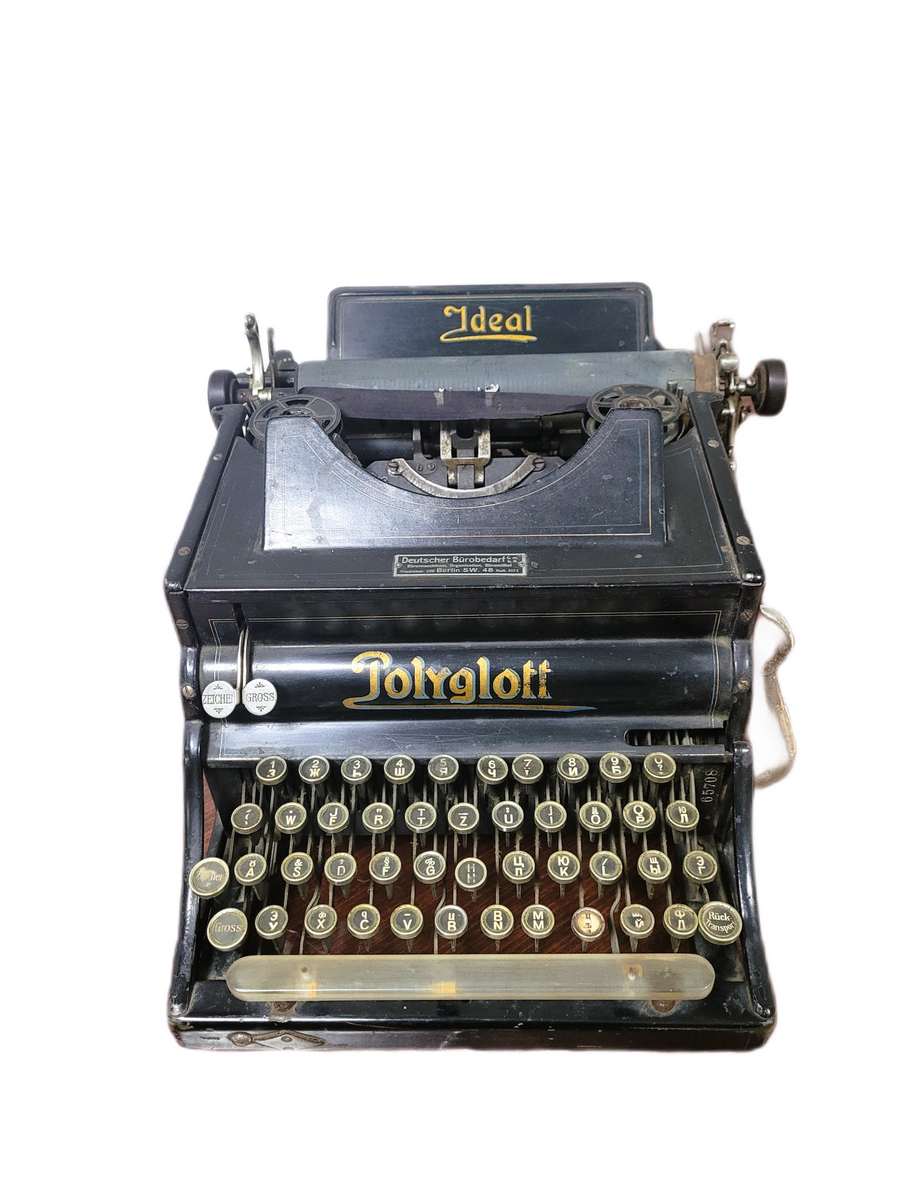
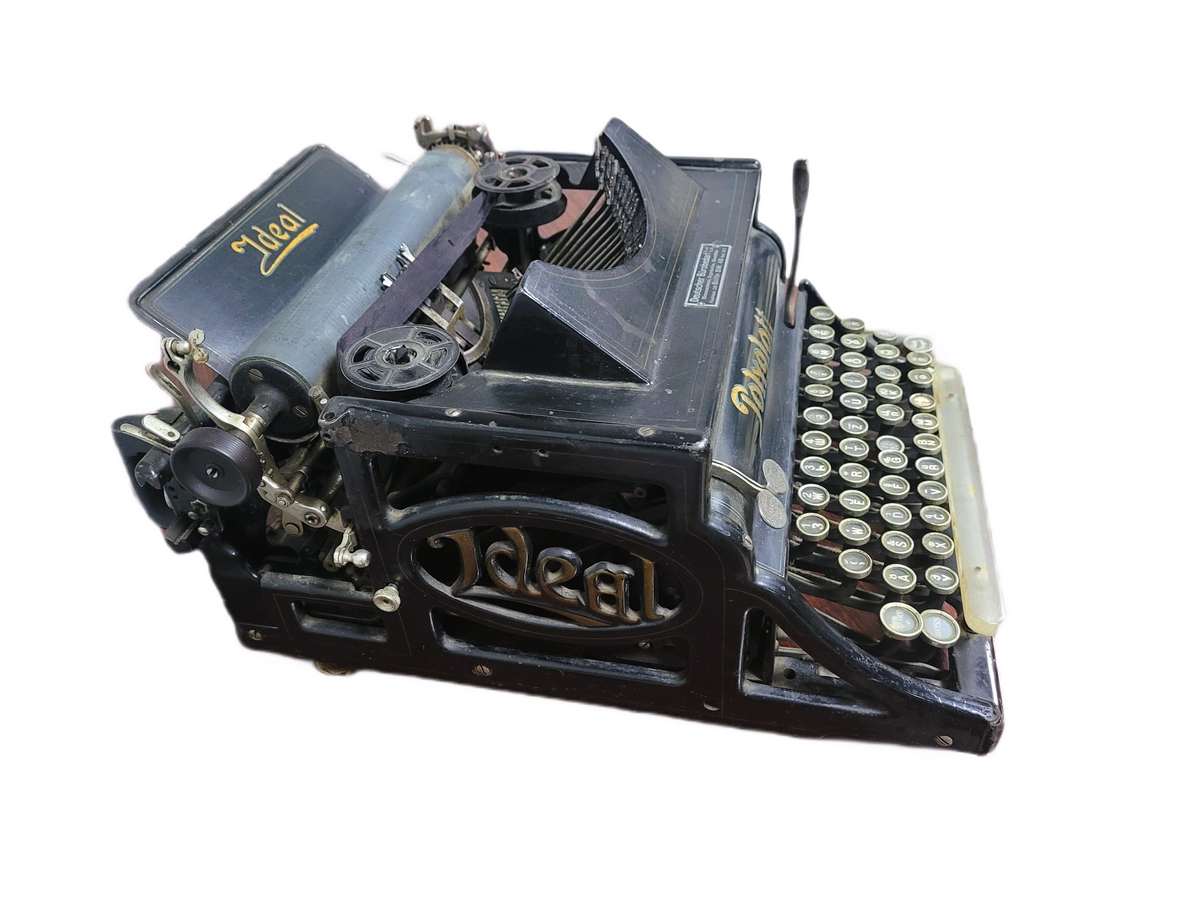 The side panels are elegantly decorated with refined cast-iron elements in the Art Nouveau style, displaying the brand name - "Ideal." The Polyglott model, featuring a bilingual keyboard patented in the United Kingdom by Max Klaczko from Riga, Latvia, was produced between 1902 and 1913, marking the first typewriter capable of writing in two languages. The "Ideal Polyglott" typewriter was actively sold in the Russian Empire and gained significant popularity in Poland, Bulgaria, and Serbia.
The side panels are elegantly decorated with refined cast-iron elements in the Art Nouveau style, displaying the brand name - "Ideal." The Polyglott model, featuring a bilingual keyboard patented in the United Kingdom by Max Klaczko from Riga, Latvia, was produced between 1902 and 1913, marking the first typewriter capable of writing in two languages. The "Ideal Polyglott" typewriter was actively sold in the Russian Empire and gained significant popularity in Poland, Bulgaria, and Serbia.






























